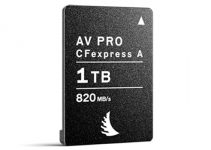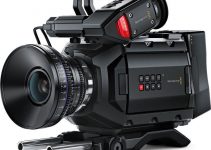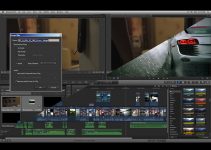Reliable, blazing fast storage solutions typically refer to large servers or advanced NAS systems packed with arrays of solid-state drives striped together in different RAID configurations for the ultimate file reading and writing experience. Since having corrupt data or lost footage is not an option for any creative professional, using such a system for data redundancy is highly recommended, especially if you need to deal with huge chunks of data on a daily basis. Unfortunately, the bulky form factor is still a serious consideration in these situations.
What if there was a way to have the level of reliability and top-notch performance of those systems shrank to the size of a USB stick? Acclaimed hardware and software enthusiast Dimitry Novoselov of HardwareCanucks shows off how to build the ultimate USB flash drive for your creative workflow on the go in a few easy steps.
The way Dimitry manages to put together this combo is by using an M.2 SATA SSD as well as a thumb drive-sized enclosure that connects to your computer via USB. And don’t worry, the process of making the drive is much simpler than you think, even if you’re not very technologically literate. All you’ll need is a couple of minutes, an M.2 SATA SSD, an appropriate enclosure, and a screwdriver.
The first step in the process is getting an M.2 SATA SSD. These drives are going to be more expensive than traditional SSDs, but they do offer much better speeds. The price will also vary significantly depending on the capacity you opt for so buy the best drive you can that fits your budget. Just make sure to pick a SATA M.2 drive, NOT NVMe due to the power limitations of the interface.
Once you’ve bought your SSD, you’ll also need to purchase an enclosure so that the drive can interface with your computer. There are many brands out there, but Dimitry recommends those made by Silverstone, Transcend, and Glotrends.
Finally, all you have to do is open up the case, insert the M.2 drive, close the case by using the screwdriver and tether the enclosure to your computer. If you want to see how the different units handle speeds with a Crucial MX300 275 GB M.2 SSD, take a look at the benchmarks Dimitry carried out.
Also, bear in mind that this DIY solution is not perfect. Putting an M.2 enclosure does not guarantee consistent performance across the board, and it is by no means faster than just plugging in an M.2 SSD directly into a motherboard.
Nevertheless, with the M.2 SATA SSD inside the enclosure, you get the convenience of carrying a decent amount of your high-resolution media while maintaining decent read/write speeds in a form factor that literally fits in your pocket, thus having it at your disposal wherever you go.
[source: HardwareCanucks]
B&H and Amazon US Order Links:
- Crucial MX300 275GB M.2 (B&H, Amazon)
- Glotrends USB 3.1 Gen2 to M.2 Adapter (Amazon)
- Transcend CM80 M.2 SATA SSD Enclosure Kit (B&H, Amazon)
Disclaimer: As an Amazon Associate partner and participant in B&H and Adorama Affiliate programmes, we earn a small comission from each purchase made through the affiliate links listed above at no additional cost to you.
Claim your copy of DAVINCI RESOLVE - SIMPLIFIED COURSE with 50% off! Get Instant Access!





